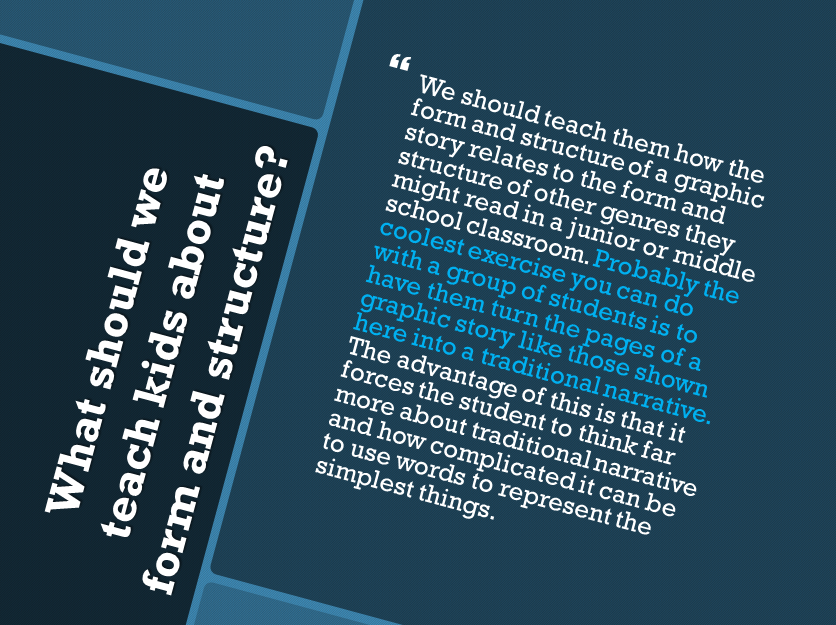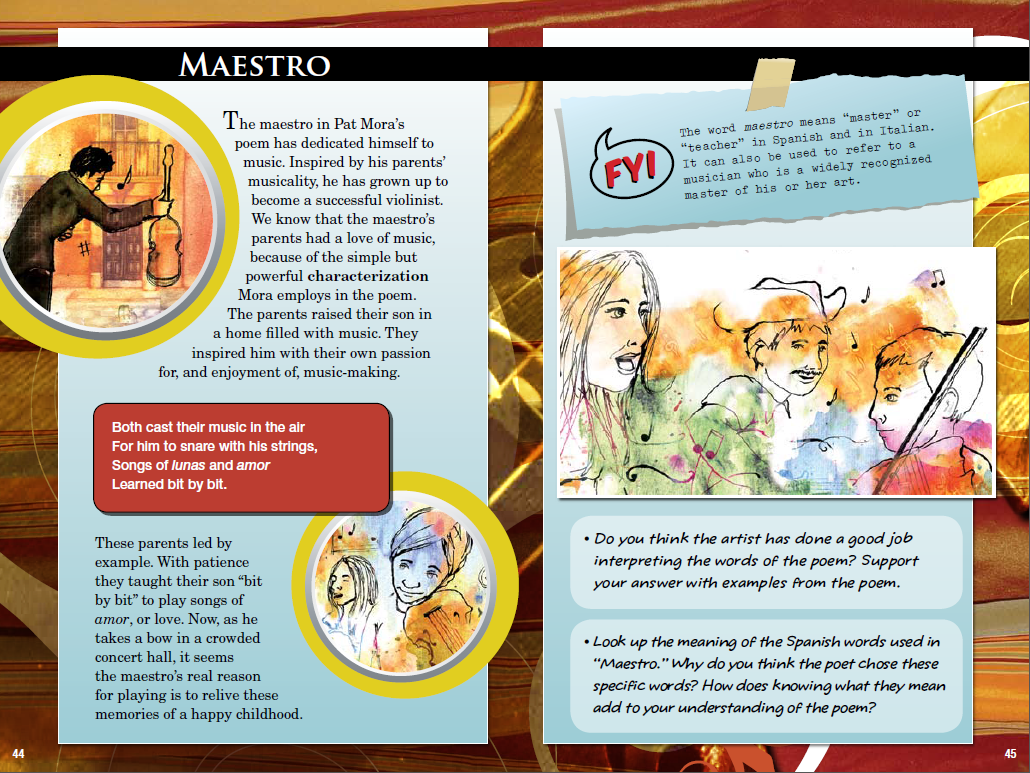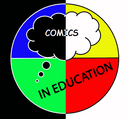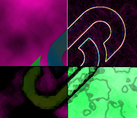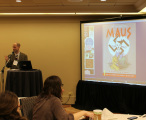ACTIVITIES
The following activities are specifically designed to help develop 21st-century literacy skills in young people by using comics and graphic novels as a source of inspiration. These activities have been designed to develop skills in five key areas: critical thinking, self awareness, metacognition, navigation skills, and empathy.
|
Your browser does not support viewing this document. Click here to download the document.
|
Activity 1 -- "Cave" ArtDESCRIPTION:
Students create a piece of visual art that shows a day in
their life in the manner of an ancient cave drawing. It is up to the individual student
to determine how much or how little they represent, how much of their canvas they
apportion to a particular moment or event, and how they use colour, shape, and
form to represent their activities or experiences. Once they have completed the
piece of visual art, students then produce a written reflection in which they
try to explain not simply what they have represented, but the process by which
they came to represent it.
PURPOSE: By the end of the activity, students should come to understand something about how they have represented themselves and their activities and experiences, how they have chosen to budget their visual space to this end, how they have gone about deciding what to include and what not to include, and what their piece of visual art does and does not say about them. |
Activity 2 -- Word and Image DESCRIPTION: Students work individually or collaboratively to create a visual representation of an historical figure, famous scientist or thinker, literary character or individual related to the discipline they are studying. They then use symbolic elements in order to convey something about that character’s personality, mindset, nature, or temperament. Once they have done this, they write a reflection that explains how these symbolic elements help us to better understand the character in question.
PURPOSE: By the end of the activity, students should understand something about how symbolic language can help us understand the visual representation of a character or individual, how symbolic language is similar to and different from orthographic language, and how words and images can have a genuinely emotive power in a given context. A great extension activity is to examine the differences between this use of the symbolic in the tradition of North American visual narrative and in Japanese manga. |
Your browser does not support viewing this document. Click here to download the document.
|
|
Your browser does not support viewing this document. Click here to download the document.
|
Activity 3 -- Visual Note-Taking DESCRIPTION: Students use a combination of words and images in order to create a visual narrative of a process, sequence, set of instructions, or procedure related to their study within a specific discipline. The instructor can have them create this to show the steps they have taken in a lab, to organize how they will prepare for a set of exams, to reflect on a strategy used in a particular sport or physical activity, or even to explore how they might handle and unfamiliar task.
PURPOSE: By the end of the activity, students should recognize the extent to which using a combination of words and images can help them to think in non-linear ways about a given task. There is much to be said when it comes to note-taking of breaking things down into a series of written steps, bullet points, or explanations, but going from the intricate web of ideas in a student’s head to the linear is not always easy. The visual note-taking, process description or instruction writing allows them not just to think outside the box, but to put the box aside and just to think. |
Activity 4 -- Wordless Narrative DESCRIPTION: Students create a storyboard or visual narrative that does not contain text. The exercise has wide application, whether in having students block a scene from a work of drama, visually relate the progress of a character’s story from a work of fiction, or visually represent the story of a particular historical moment. The exercise is similar to Activity 3: Visual Note-Taking, but the student is not permitted to use words in order to communicate his or her ideas.
PURPOSE: By the end of the activity, students should perceive the challenges of communicating without words, translating the written or verbal into the visual, and developing a narrative that is comprehensible to their audience when said narrative must be interpreted in the absence of explanation. The aim of the exercise is to develop the student’s communication skills and transliteracy: the ability to demonstrate literacy across a range of platforms or mediums of expression by making meaningful connections between them. |
Your browser does not support viewing this document. Click here to download the document.
|
|
Your browser does not support viewing this document. Click here to download the document.
|
Activity 5 -- Graphic Poetry DESCRIPTION: Students read, examine, and create graphic poems, and consider both the implications of using the visual in connection with poetry, and whether an artist or poet/artist can visually represent the intricacies of literal and figurative language. The hope is that students will recognize the beauty of graphic poetry and thereby develop a greater fondness for and appreciation of poetry proper.
PURPOSE: By the end of the activity, students should see that there is something to be gained and something to be lost in marrying a poem with its graphic illustration. What is gained is a visual context that the readers can use to help them understand what is actually happening in a poem. What is also gained is the recognition of what art can and can't do with pictures in order to mimic or represent the figurative. What is lost, perhaps, is precisely what is lost when the curtain rises for a drama and we see the gradual unfolding of the directorial decisions that will define how the performance in front of us interprets the stage directions and dialogue of the playwright. |
